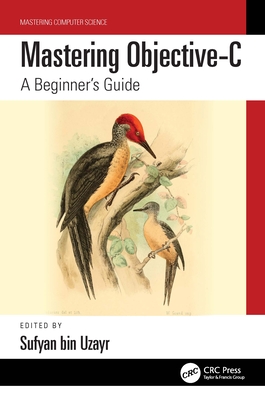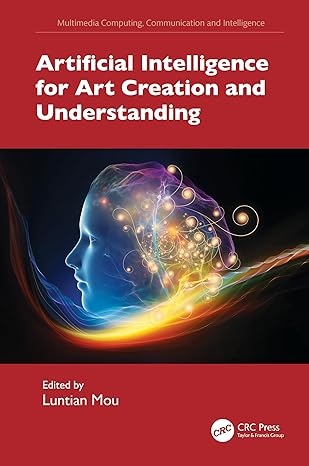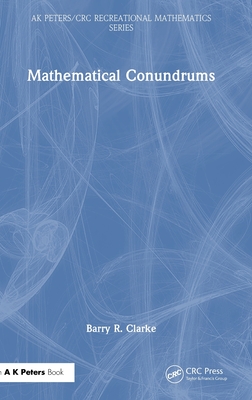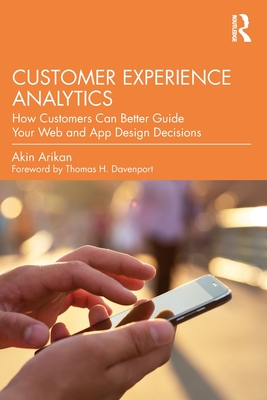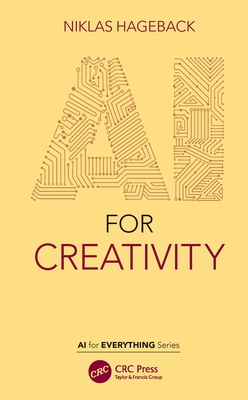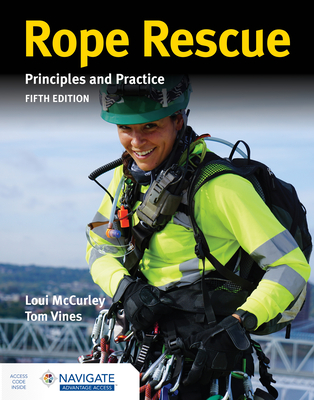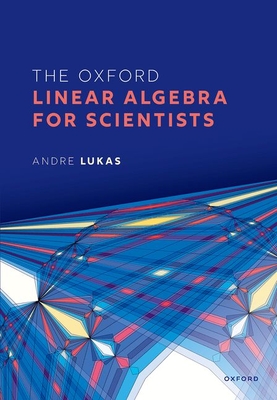图书简介
This newly enhanced seventh edition of INTERACCIONES bridges the gap between first- and second-year Spanish through a broad focus on useful grammar structures, practical vocabulary, and an effective integration of language and culture. INTERACCIONES enforces grammar and vocabulary presentations with authentic readings and listening activities in order to give students a real-life context in which to use the material. Along with it is a new video program containing six award-winning short films, all delivered within an intuitive and understandable unit organization. Enhancements have also been made to iLrn to give students and instructors more opportunity for interactive language practice with one another via the use of Share it! activities. There have also been updates to the content on iLrn, including the incorporation of video footage from National Geographic with communicative activities. INTERACCIONES employs a tried-and-true pedagogical approach, with special attention to the use of language in context and the National Standards for Foreign Language Learning. These features give students the practice and context needed to communicate in Spanish, and fully engage them to continue studying Spanish past the intermediate level.
Unidad I: BIENVENIDOS A ESPAÑA.
Cultural Themes.
Comprensión.
Más Allá del Aula.
1. La vida de todos los días.
PRIMERA SITUACIÓN.
Presentación – Un día típico.
Así se habla – Expressing sequence and frequency of actions.
Estructuras – Discussing daily activities: Present tense of regular and irregular verbs.
Estructuras – Talking about other activities: Present tense of stem-changing verbs.
SEGUNDA SITUACIÓN.
Presentación – La rutina diaria.
Así se habla – Expressing lack of comprehension.
Estructuras – Describing daily routine: Reflexive verbs.
Estructuras – Asking questions: Question formation.
TERCERA SITUACIÓN.
Diálogos en vídeo – Para comprender lo que ve: Paying attention to gestures and body language.
Diálogos en vídeo – Para comprender lo que escucha: The gist of a conversation
Perspectivas – El horario español.
Así se escribe – Para escribir bien: Writing personal letters and e-mail messages.
Interacciones.
2. De vacaciones.
PRIMERA SITUACIÓN.
Presentación – En el complejo turístico.
Así se habla – Making a personal phone call.
Estructuras – Talking about past activities: Preterite of regular verbs.
Estructuras – Discussing other past activities: Preterite of irregular verbs.
Estructuras – Discussing when things happened: Expressing dates.
SEGUNDA SITUACIÓN.
Presentación – Diversiones nocturnas.
Así se habla – Circumlocating.
Estructuras – Discussing past actions: Preterite of stem-changing verbs.
Estructuras – Distinguishing between people and things: Personal a.
Estructuras – Avoiding repetition of nouns: Direct object pronouns.
TERCERA SITUACIÓN.
Diálogos en vídeo –Para comprender lo que ve: Paying attention to context.
Diálogos en vídeo – Para comprender lo que escucha: Using visual aids.
Perspectivas – Celebrando las fiestas de verano.
Así se escribe – Para escribir bien: Sequencing events.
Interacciones.
HERENCIA CULTURAL.
Cortometraje - La lista.
Arte y Arquitectura – Dos grandes maestros del Prado: Velázquez y Goya.
Lectura Literaria – Para leer bien: Figurative language and symbols (Rimas de Gustavo Adolfo Bécquer).
Unidad II: BIENVENIDOS A MÉXICO.
Cultural Themes.
Comprensión.
Más Allá del Aula.
3. En familia.
PRIMERA SITUACIÓN.
Presentación – Los domingos en familia.
Así se habla – Greetings and leave-takings.
Estructuras – Describing what life used to be like: Imperfect tense.
Estructuras – Describing people: Formation and agreement of adjectives.
Estructuras – Expressing endearment: Diminutives.
SEGUNDA SITUACIÓN.
Presentación – La boda de María Luisa.
Así se habla – Extending, accepting, and declining an invitation.
Estructuras – Discussing conditions, characteristics, and existence: Uses of ser, estar, and haber.
Estructuras – Indicating ownership: Possessive adjectives and pronouns.
TERCERA SITUACIÓN.
Diálogos en vídeo – Para comprender lo que ve: Paying attention to location.
Diálogos en vídeo – Para comprender lo que escucha: Focusing on specific information.
Perspectivas – Nombres, apodos y apellidos.
Así se escribe – Para escribir bien: Extending and replying to a written invitation.
Interacciones.
4. En el restaurante.
PRIMERA SITUACIÓN.
Presentación – Me encantan las enchiladas.
Así se habla – Ordering in a restaurant.
Estructuras – Indicating to whom and for whom actions are done: Indirect object pronouns.
Estructuras – Expressing likes and dislikes: Verbs like gustar.
Estructuras – Refusing, finding out and meeting: Verbs that change English meaning in the preterite.
SEGUNDA SITUACIÓN.
Presentación – Fuimos a un buen restaurante.
Así se habla – Making introductions.
Estructuras – Narrating in the past: Imperfect versus preterite.
Estructuras – Talking about people and events in a series: Ordinal numbers.
TERCERA SITUACIÓN.
Diálogos en vídeo –Para comprender lo que ve: Reactivating background knowledge.
Diálogos en vídeo – Para comprender lo que escucha: Remembering key details and paraphrasing.
Perspectivas – Los menús en el mundo hispano.
Así se escribe – Para escribir bien: Improving accuracy.
Interacciones.
HERENCIA CULTURAL.
Cortometraje - Ana y Manuel.
Arte y Arquitectura – Dos artistas mexicanos del siglo XX: Diego Rivera y Frida Kahlo.
Lectura Literaria – Para leer bien: Elements of a short story (El recado de Elena Poniatowska).
Unidad III: BIENVENIDOS A CENTROAMÉRICA, COLOMBIA Y VENEZUELA.
Cultural Themes.
Comprensión.
Más Allá del Aula.
5. En la universidad.
PRIMERA SITUACIÓN.
Presentación – ¿Dónde está la Facultad de Ingeniería?
Así se habla – Classroom expressions.
Estructuras – Indicating location, purpose, and time: Some prepositions; por versus para.
Estructuras – Indicating the recipient of something: Prepositional pronouns.
SEGUNDA SITUACIÓN.
Presentación – Mis clases del semestre pasado.
Así se habla – Talking about the weather.
Estructuras – Expressing hopes, desires, and requests: Present subjunctive after verbs of wishing, hoping, commanding, and requesting.
Estructuras – Making comparisons: Comparisons of inequality.
TERCERA SITUACIÓN.
Diálogos en vídeo – Para comprender lo que ve: Observing proxemics.
Diálogos en vídeo – Para comprender lo que escucha: The setting of a conversation.
Así se escribe – Para escribir bien: Summarizing.
Interacciones.
6. En casa.
PRIMERA SITUACIÓN.
Presentación – Lava los platos y saca la basura.
Así se habla – Enlisting help.
Estructuras – Telling others what to do: Familiar commands.
Estructuras – Comparing people and things with equal qualities: Comparisons of equality.
Estructuras – Pointing out people and things: Demonstrative adjectives and pronouns
SEGUNDA SITUACIÓN.
Presentación – Los programas de la tele.
Así se habla – Expressing polite dismissal.
Estructuras – Expressing judgment, doubt, and uncertainty: Subjunctive after expressions of emotion, judgment and doubt.
Estructuras – Talking about things and people: More about gender and number of nouns.
TERCERA SITUACIÓN.
Diálogos en vídeo – Para comprender lo que ve: Inferring social customs and practices.
Diálogos en vídeo – Para comprender lo que escucha: The main idea and supporting details.
Perspectivas – La vivienda en el mundo hispano.
Así se escribe – Para escribir bien: Preparing to write.
Interacciones.
HERENCIA CULTURAL.
Cortometraje - Connecting people.
Arte y Arquitectura – Unos artistas modernos: Botero y Soto.
Lectura Literaria – Para leer bien: Applying journalistic reading techniques to literatura (Un día de éstos de Gabriel García Márquez).
Unidad IV: BIENVENIDOS A LOS PAÍSES ANDINOS: BOLIVIA, ECUADOR Y PERÚ.
Cultural Themes.
Comprensión.
Más Allá del Aula.
7. De compras.
PRIMERA SITUACIÓN.
Presentación – En un centro comercial.
Así se habla – Making routine purchases.
Estructuras – Expressing actions in progress: Progressive tenses.
Estructuras – Making comparisons: Superlative forms of adjectives.
Estructuras – Talking about people and things: Uses of the definite article.
SEGUNDA SITUACIÓN.
Presentación – En la tienda de ropa de mujeres.
Así se habla – Complaining.
Estructuras – Denying and contradicting: Indefinite and negative expressions.
Estructuras – Avoiding repetition of previously mentioned people and things: Double object pronouns.
Estructuras – Linking ideas: ye; ou.
TERCERA SITUACIÓN.
Diálogos en vídeo – Para comprender lo que ve: Observing dress codes.
Diálogos en vídeo – Para comprender lo que escucha: Making inferences.
Perspectivas – De compras en el mundo hispano.
Así se escribe – Para escribir bien: Messages and letters of complaint
Interacciones.
8. En la ciudad.
PRIMERA SITUACIÓN.
Presentación – ¿Dónde está el museo?
Así se habla – Asking for, understanding, and giving directions.
Estructuras – Telling others what to do: Formal commands.
Estructuras – Asking for and giving directions: Passive se and third person plural passive.
Estructuras – Talking about other people: Uses of the indefinite article.
SEGUNDA SITUACIÓN.
Presentación – ¿Qué vamos a hacer hoy?
Así se habla – Persuading.
Estructuras – Discussing future activities: Future tense.
Estructuras – Expressing probability: Future of probability.
Estructuras – Suggesting group activities: Nosotros commands.
TERCERA SITUACIÓN.
Diálogos en vídeo – Para comprender lo que ve: Observing facial expressions.
Diálogos en vídeo – Para comprender lo que escucha: Taking notes.
Perspectivas – Las ciudades del mundo hispano.
Así se escribe – Para escribir bien: Keeping a journal.
Interacciones.
HERENCIA CULTURAL.
Cortometraje – Peru, Nebraska.
Arte y Arquitectura – La arquitectura colonial de Lima.
Lectura Literaria – Para leer bien: Identifying literary themes (La camisa de Margarita de Ricardo Palma).
Unidad V: BIENVENIDOS A LA COMUNIDAD HISPANA EN LOS ESTADOS UNIDOS.
Cultural Themes
Comprensión
Más Allá del Aula
9. En la agencia de empleos.
PRIMERA SITUACIÓN.
Presentación – ¿Dónde trabajaría Ud.?
Así se habla – Changing directions in a conversation.
Estructuras – Explaining what you would do under certain conditions: Conditional.
Estructuras – Describing how actions are done: Adverb formation.
Estructuras – Indicating quantity: Adjectives of quantity.
SEGUNDA SITUACIÓN.
Presentación – Necesito un(a) asistente ejecutivo(a).
Así se habla – Double-checking comprehension.
Estructuras – Talking about unknown or nonexistent people and things: Subjunctive in adjective clauses.
Estructuras – Explaining what you want others to do: Indirect commands.
Estructuras – Expressing exceptional qualities: Absolute superlative.
TERCERA SITUACIÓN.
Diálogos en vídeo – Para comprender lo que ve: Observing proxemics and body language in business interactions.
Diálogos en vídeo – Para comprender lo que escucha: Summarizing.
Perspectivas – El concepto del trabajo.
Así se escribe – Para escribir bien: Applying for a job or fillingo ut an application
Interacciones.
10. En la empresa multinacional.
PRIMERA SITUACIÓN.
Presentación – Quisiera hablar con el jefe.
Así se habla – Making a business phone call.
Estructuras – Discussing completed past actions: Present perfect tense
Estructuras – Explaining what you hope or doubt has happened: Present perfect subjunctive.
Estructuras – Discussing reciprocal actions: Reciprocal nos and se
SEGUNDA SITUACIÓN.
Presentación – En el banco.
Así se habla – Doing the banking.
Estructuras – Talking about actions completed before other actions: Past perfect tense.
Estructuras – Explaining duration of actions: Hace and llevar in time expressions.
Estructuras – Expressing quantity: Using numbers.
TERCERA SITUACIÓN.
Diálogos en vídeo – Para comprender lo que ve: Inferring business practices.
Diálogos en vídeo – Para comprender lo que escucha: Reporting what was said.
Perspectivas – Las comunidades hispanas.
Así se escribe – Para escribir bien: Writing a business letter.
Interacciones.
HERENCIA CULTURAL.
Cortometraje – Victoria para Chino.
Arte y Arquitectura – La arquitectura colonial española de los Estados Unidos.
Lectura Literaria – Para leer bien: Identifying point of view in literature (Casi una mujer de Esmeralda Santiago).
Unidad VI: BIENVENIDOS AL CONO SUR: ARGENTINA, CHILE, PARAGUAY Y URUGUAY.
Cultural Themes.
Comprensión.
Más Allá del Aula.
11. De viaje.
PRIMERA SITUACIÓN.
Presentación – En el aeropuerto.
Así se habla – Buying a ticket and boarding a plane.
Estructuras – Explaining previous wants, advice, and doubts: Imperfect subjunctive.
Estructuras – Making polite requests: Other uses of the imperfect subjunctive.
Estructuras – Discussing contrary-to-fact situations: If clauses with the imperfect subjunctive and the conditional.
SEGUNDA SITUACIÓN.
Presentación – Una habitación doble, por favor.
Así se habla – Getting a hotel room.
Estructuras – Explaining when future actions will take place: Subjunctive in adverbial clauses.
Estructuras – Describing future actions that will take place before other future actions: Future perfect tense.
TERCERA SITUACIÓN.
Diálogos en vídeo – Para comprender lo que ve: Observing people’s demeanor.
Diálogos en vídeo – Para comprender lo que escucha: Identifying the main topic.
Perspectivas – El transporte en el mundo hispano.
Así se escribe – Para escribir bien: Explaining and hypothesizing.
Interacciones.
12. Los deportes.
PRIMERA SITUACIÓN.
Presentación – ¿Fuiste al partido del domingo?
Así se habla – Discussing sports and games.
Estructuras – Explaining what you would have done under certain circumstances: Conditional perfect.
Estructuras – Discussing what you hoped would have happened: Past perfect subjunctive.
Estructuras – Discussing contrary-to-fact situations: If clauses with the conditional perfect and the past perfect subjunctive.
SEGUNDA SITUACIÓN.
Presentación – En el consultorio del médico.
Así se habla – Expressing sympathy and good wishes.
Estructuras – Discussing unexpected events: Reflexive for unplanned occurences.
Estructuras – Linking ideas: Relative pronouns: que and quien.
Estructuras – Linking ideas: Relative pronouns: Forms of el que, el cual and cuyo.
TERCERA SITUACIÓN.
Diálogos en vídeo –Para comprender lo que ve: Observing cultural protocols.
Diálogos en vídeo – Para comprender lo que escucha: Identifying levels of politeness.
Perspectivas – Los deportes del mundo hispano.
Así se escribe – Para escribir bien: Writing personal notes and messages.
Interacciones.
HERENCIA CULTURAL.
Cortometraje – Lo importante.
Arte y Arquitectura – Buenos Aires: Una ciudad grande y cosmopolita.
Lectura Literaria – Para leer bien: Elements of poetry (Poemas de Pablo Neruda).
APPENDICES.
Appendix A: Alternate Version of drawings for ¿Qué me dices?; Information Gap Activities.
Appendix B: Vocabulary at a glance.
Appendix C: Metric units of measurement.
Appendix D: The writing and spelling system.
Appendix E: Verb conjugations.
Spanish-English Vocabulary.
Index.
Credits.
Trade Policy 买家须知
- 关于产品:
- ● 正版保障:本网站隶属于中国国际图书贸易集团公司,确保所有图书都是100%正版。
- ● 环保纸张:进口图书大多使用的都是环保轻型张,颜色偏黄,重量比较轻。
- ● 毛边版:即书翻页的地方,故意做成了参差不齐的样子,一般为精装版,更具收藏价值。
关于退换货:- 由于预订产品的特殊性,采购订单正式发订后,买方不得无故取消全部或部分产品的订购。
- 由于进口图书的特殊性,发生以下情况的,请直接拒收货物,由快递返回:
- ● 外包装破损/发错货/少发货/图书外观破损/图书配件不全(例如:光盘等)
并请在工作日通过电话400-008-1110联系我们。
- 签收后,如发生以下情况,请在签收后的5个工作日内联系客服办理退换货:
- ● 缺页/错页/错印/脱线
关于发货时间:- 一般情况下:
- ●【现货】 下单后48小时内由北京(库房)发出快递。
- ●【预订】【预售】下单后国外发货,到货时间预计5-8周左右,店铺默认中通快递,如需顺丰快递邮费到付。
- ● 需要开具发票的客户,发货时间可能在上述基础上再延后1-2个工作日(紧急发票需求,请联系010-68433105/3213);
- ● 如遇其他特殊原因,对发货时间有影响的,我们会第一时间在网站公告,敬请留意。
关于到货时间:- 由于进口图书入境入库后,都是委托第三方快递发货,所以我们只能保证在规定时间内发出,但无法为您保证确切的到货时间。
- ● 主要城市一般2-4天
- ● 偏远地区一般4-7天
关于接听咨询电话的时间:- 010-68433105/3213正常接听咨询电话的时间为:周一至周五上午8:30~下午5:00,周六、日及法定节假日休息,将无法接听来电,敬请谅解。
- 其它时间您也可以通过邮件联系我们:customer@readgo.cn,工作日会优先处理。
关于快递:- ● 已付款订单:主要由中通、宅急送负责派送,订单进度查询请拨打010-68433105/3213。
本书暂无推荐
本书暂无推荐


